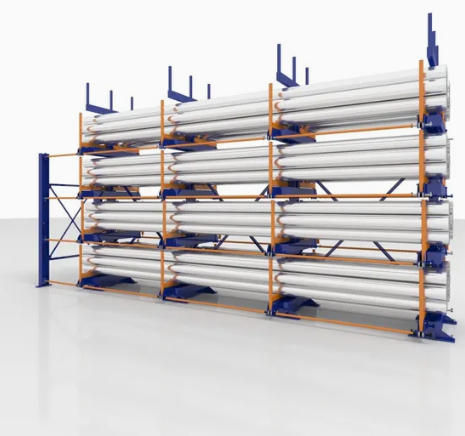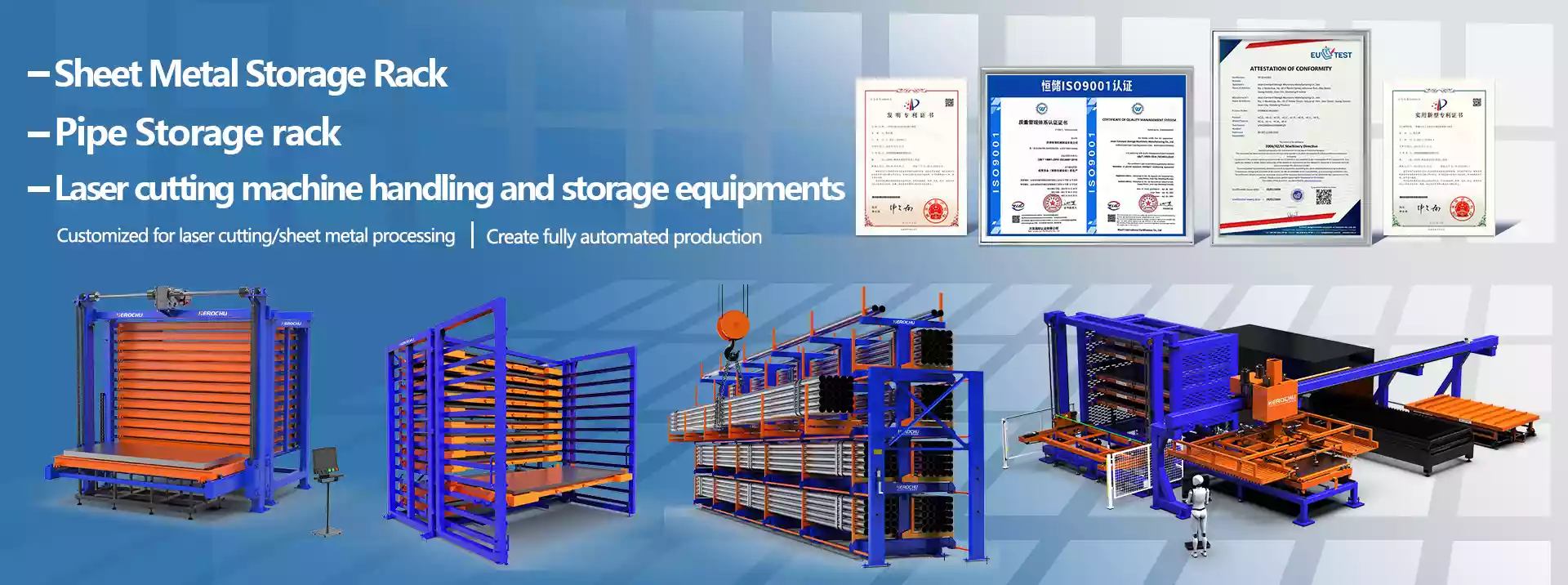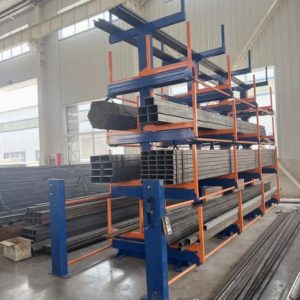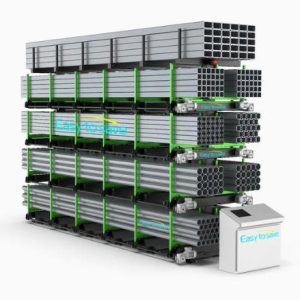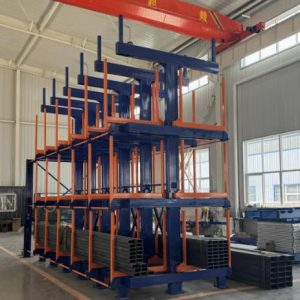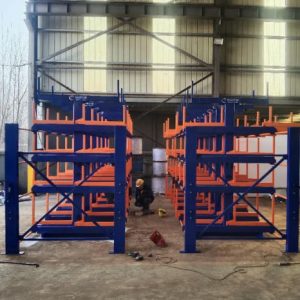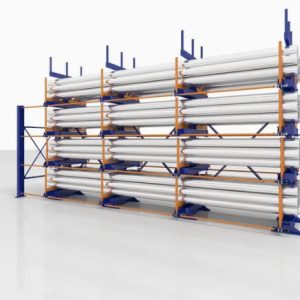Fixed vs. Roll-Out Cantilever Racks: Weighing Cost Against Accessibility & Efficiency by Herochu
For warehouse managers, manufacturing supervisors, and construction site leads, choosing the right cantilever rack isn’t just about storing materials—it’s about balancing budget, space, and long-term efficiency. Herochu, a leader in industrial storage solutions with CE, UE, and ISO 9001 certifications, offers both fixed and roll-out (telescopic) cantilever racks to meet diverse needs. But a common question lingers: Why do roll-out cantilever racks carry a higher price tag than fixed models? And are they worth the investment?
Starting at $4,899 (with full customization for your workshop), Herochu’s racks are built to last—but understanding the difference between fixed and roll-out designs is key to making a choice that aligns with your operations. Let’s break down the costs, benefits, and use cases of each, so you can decide which rack transforms your storage from a logistical challenge to a competitive advantage.
Fixed Cantilever Racks: The Reliable, Budget-Friendly Workhorse
Think of Herochu’s fixed cantilever rack as the “sturdy bench” of industrial storage: simple, dependable, and designed for static use. Its arms are either welded or bolted into place, meaning once installed, they stay put—no moving parts, no complex mechanisms. This simplicity is its greatest strength, especially for businesses prioritizing upfront cost savings and straightforward storage.
How Fixed Racks Work (and Who They’re For)
Fixed cantilever racks excel at holding long, heavy materials—like steel pipes, lumber, or aluminum profiles—that don’t need frequent repositioning. For example, a construction company storing rebar for a 6-month project, or a manufacturing plant with a dedicated area for raw metal bars, might find fixed racks ideal. The arms are spaced to fit specific material lengths (Herochu offers standard sizes up to 12 meters, with customization available), and the steel frame (made from high-strength Q235 steel) supports loads up to 8 tons per rack (depending on the model).
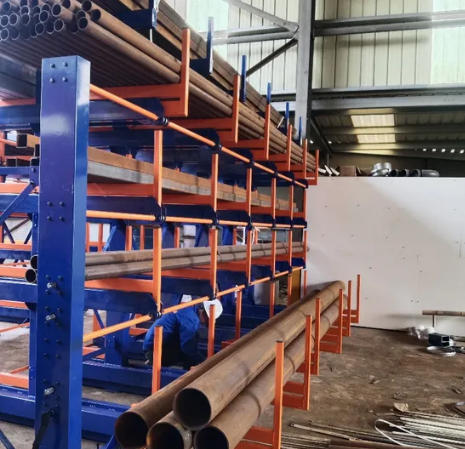
The Pros of Fixed Cantilever Racks
- Lower Upfront Cost: With fewer components and simpler manufacturing, fixed racks are significantly more affordable than roll-out models. For small businesses or teams with tight budgets, this makes them a accessible entry point into organized industrial storage.
- Minimal Maintenance: No chains, gears, or motors mean fewer parts to wear out or repair. A quarterly inspection of bolts and welds is usually enough to keep fixed racks in top shape—saving time and maintenance costs over years of use.
- Stability for Heavy Loads: Welded or bolted arms create a rigid structure that’s ideal for storing dense materials (like thick steel beams) that don’t require frequent access. The lack of moving parts eliminates the risk of mechanical failure under heavy weight.
The Cons: Where Fixed Racks Fall Short
- Wasted Space: Fixed racks rely on forklifts for loading and unloading—and forklifts need wide aisles (4–5 meters) to turn and maneuver. In a 1,000-square-meter warehouse, this can eat up 30–40% of floor space that could otherwise be used for storage or production. For businesses in urban areas or facilities with limited square footage, this inefficiency is a major drawback.
- Limited Accessibility: If you need to retrieve a single bundle of pipe from the back of a fixed rack, you’ll likely have to move other materials out of the way first. This “last-in, first-out” challenge slows down operations, especially for teams handling multiple material types or frequent order changes.
- Safety Risks: Wide aisles mean more forklift traffic, increasing the risk of collisions with workers, equipment, or stored materials. Manual handling (to adjust loads) also raises the chance of strains or injuries—something that becomes more common as teams rush to meet deadlines.
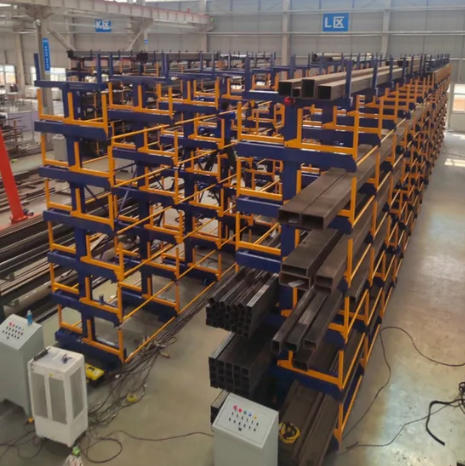
Roll-Out Cantilever Racks: The Flexible, Space-Saving Powerhouse
Herochu’s roll-out (telescopic) cantilever rack is the “Transformer” of industrial storage: it adapts to your needs, saves space, and streamlines access. Unlike fixed racks, its arms extend and retract on precision rails—powered manually or electrically (Herochu’s electric models use PLC frequency conversion control for smooth operation). This flexibility comes with a higher upfront cost, but the long-term benefits often outweigh the price tag.
How Roll-Out Racks Work (and Who They’re For)
Roll-out racks are designed for businesses that need frequent, easy access to long materials—or want to maximize every inch of floor space. For example:
- A metal fabrication shop that switches between 6-meter and 9-meter steel tubes daily.
- A warehouse storing multiple pipe sizes for plumbing contractors, where quick retrieval is key to meeting delivery deadlines.
- A construction company working on a tight job site, where space is too limited for 5-meter forklift aisles.
Herochu’s roll-out racks use a system of chains, gears, and bearings (all made from corrosion-resistant materials) to extend arms fully—so you can reach materials at the back of the rack without moving other loads. Electric models include a remote control (operable from up to 10 meters away) for effortless operation, while manual models are ideal for lighter loads (under 2 tons per layer).

The Pros of Roll-Out Cantilever Racks
- Dramatic Space Savings: Roll-out racks work with mobile gantry cranes or overhead cranes, which only need 1.4-meter aisles (compared to 4–5 meters for forklifts). In that same 1,000-square-meter warehouse, this reduces aisle space by 70%, freeing up 200–300 square meters for additional storage or equipment. For businesses growing quickly, this means avoiding costly facility expansions.
- Faster, Safer Access: With extendable arms, you can retrieve any material in seconds—no more moving stacks or waiting for forklifts. Electric models eliminate manual lifting entirely, reducing worker injuries by up to 60% (according to Herochu’s customer data). Accessories like guard nets and dividers add extra safety, keeping loads secure during extension.
- Flexibility for Changing Needs: Herochu’s roll-out racks are fully customizable—adjust arm lengths, layer heights, or load capacities (up to 42 tons per rack) to fit new materials or workflow changes. For example, if you start storing 12-meter steel beams instead of 6-meter ones, you can modify the rack rather than buying a new one.
- Durability That Pays Off: While roll-out racks have more moving parts, Herochu builds them to last. Components undergo galvanizing or blackening for corrosion resistance, and high-precision machining ensures smooth operation even under heavy loads (up to 5,000kg per bundle). Rigorous quality checks—including weld inspections and polishings—eliminate defects, so the rack stays reliable for decades.
The Cons: Why Roll-Out Racks Cost More
- Higher Upfront Price: The complexity of roll-out designs (chains, gears, motors, PLC controls) means higher production costs than fixed racks. Herochu’s roll-out models start at $4,899 (compared to lower prices for fixed racks), which can be a barrier for small businesses with immediate budget constraints.
- Slightly More Maintenance: Moving parts need occasional lubrication, and electric models require battery checks (for remote controls) or power source inspections. That said, Herochu’s roll-out racks are low-maintenance overall—most customers only need a monthly check to keep them running smoothly.
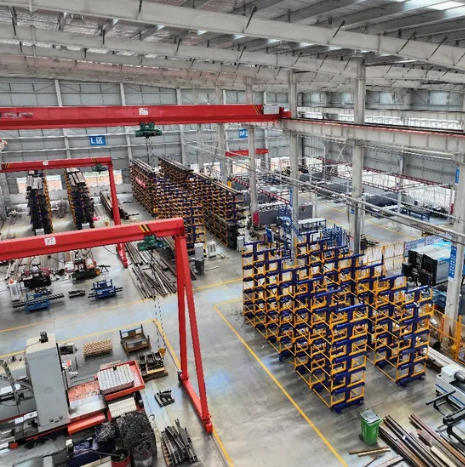
Cost vs. Value: Are Roll-Out Racks Worth the Investment?
The upfront cost of roll-out cantilever racks is higher, but the long-term savings often make them the smarter choice. Let’s break down the math with a real-world example:
Imagine a 2,000-square-meter warehouse using fixed racks with 5-meter aisles. The warehouse has 8 fixed racks, each taking up 10 square meters of storage space—plus 40% of the floor (800 square meters) used for aisles. Total usable storage space: 1,200 square meters.
If the warehouse switches to Herochu’s roll-out racks with 1.4-meter aisles, aisle space drops to 280 square meters—freeing up 520 square meters of storage. At an average cost of $10 per square meter per month for warehouse space, that’s $5,200 in monthly savings ($62,400 per year).
Add in other benefits:
- Reduced forklift costs (fewer hours of operation, lower fuel/electricity use).
- Fewer worker injuries (saving on workers’ compensation claims and downtime).
- Faster order fulfillment (increasing customer satisfaction and repeat business).
For most businesses, the roll-out rack pays for itself within 1–2 years. And over 10 years, the total savings (space, labor, maintenance) can be 3–4 times the upfront cost.
How to Choose: Fixed vs. Roll-Out Racks for Your Business
Herochu’s goal is to help you find the rack that fits your unique needs—not just sell you a product. Here’s how to decide:
Choose Fixed Cantilever Racks If:
- You have a tight budget and don’t need frequent access to stored materials.
- Your warehouse has plenty of floor space (so wide aisles aren’t a problem).
- You store the same materials long-term (e.g., a year or more) with minimal retrieval.
- You only use forklifts for loading/unloading and don’t have overhead cranes.
Herochu’s fixed racks are a great choice for small manufacturing shops, rural warehouses, or teams with static storage needs. We offer standard models (e.g., HC-F2000, HC-F3000) with load capacities up to 5 tons per rack, plus customization for material lengths or colors.
Choose Roll-Out Cantilever Racks If:
- You need to maximize space (e.g., urban warehouses, small job sites).
- You retrieve materials frequently (multiple times per day or week).
- You prioritize worker safety and want to reduce manual labor.
- You use overhead cranes or mobile gantries (or plan to invest in them).
- You expect your storage needs to change (e.g., adding new material sizes).
Herochu’s roll-out racks—including manual (HC-R2000) and electric (HC-E3000) models—are perfect for busy warehouses, fabrication shops, and construction companies. We customize every aspect: arm length, layer count (up to 8 levels), load capacity (up to 42 tons per rack), and color (standard orange/blue or custom shades).

Why Herochu Stands Out for Both Racks
Whether you choose fixed or roll-out, Herochu’s cantilever racks are built to exceed industry standards. Here’s what sets us apart:
- Certified Quality: Every rack meets CE, UE, and ISO 9001 standards—so you know it’s safe, durable, and compliant with global regulations.
- Full Customization: We don’t force you to fit your materials to a standard rack. Tell us your material lengths, load weights, and workshop dimensions, and we’ll design a rack that fits like a glove.
- End-to-End Support: From consultation (we’ll visit your site to assess needs) to installation (our team handles setup) to after-sales service (we offer warranties on all components), we’re with you every step of the way.
- Proven Performance: Herochu has supplied racks to 500+ businesses worldwide—from small fabrication shops to Fortune 500 manufacturing companies. Our customers report 30% higher storage efficiency and 40% fewer safety incidents after switching to our racks.
Get Started with Herochu Today
Ready to choose between fixed and roll-out cantilever racks? Contact Herochu for a free consultation. Our team will:
- Visit your workshop/warehouse to measure space and assess material needs.
- Provide a detailed quote for both fixed and roll-out options (with cost-benefit analysis).
- Share 3D renderings of your custom rack, so you can visualize how it will fit.
- Answer all your questions—from maintenance to installation timelines.
Herochu’s fixed cantilever racks are the reliable choice for budget-focused teams, while our roll-out racks are the investment that transforms your storage efficiency. No matter which you choose, you’ll get a rack built to last—backed by a company that cares about your success.
Start your journey to better storage today. Call Herochu at [phone number] or email [email address] to schedule your free consultation.
